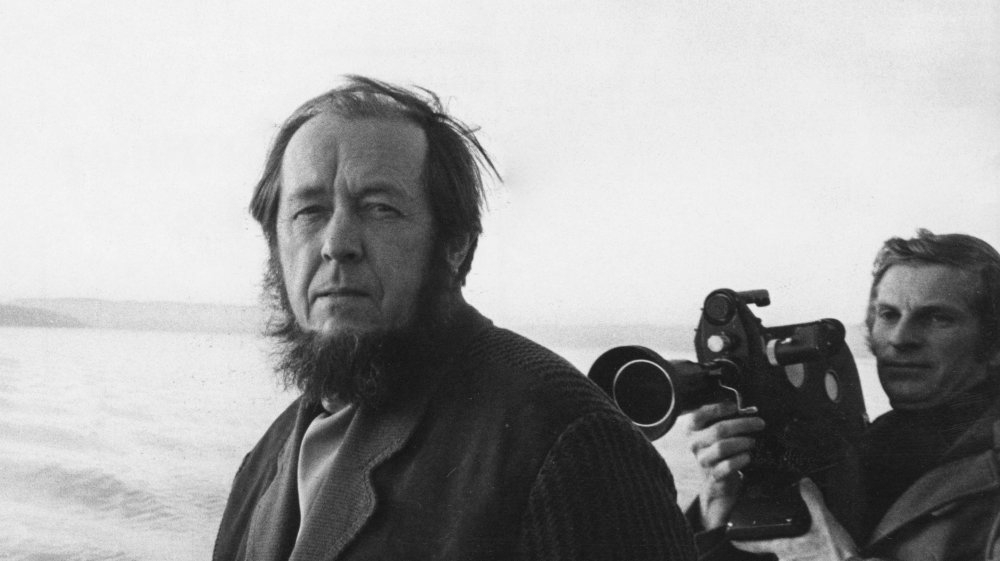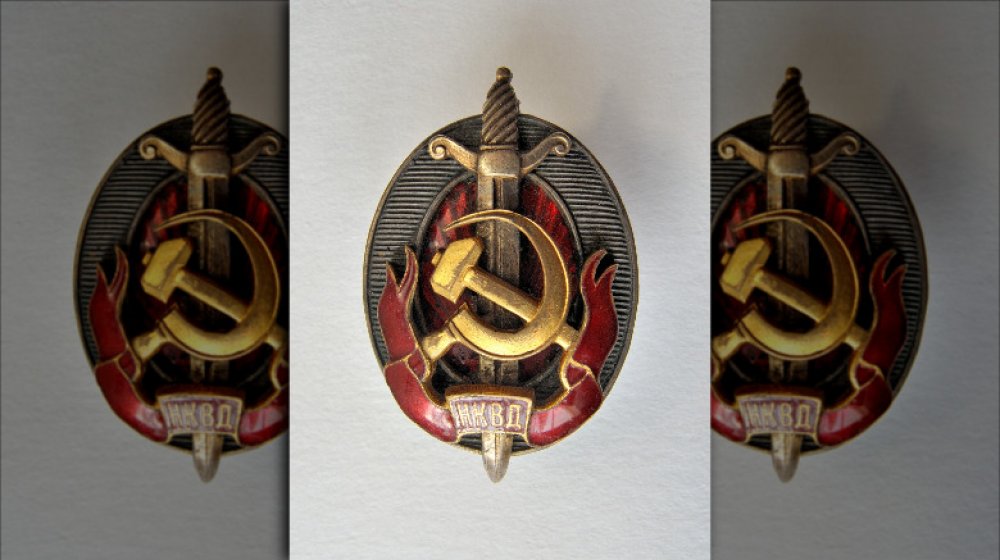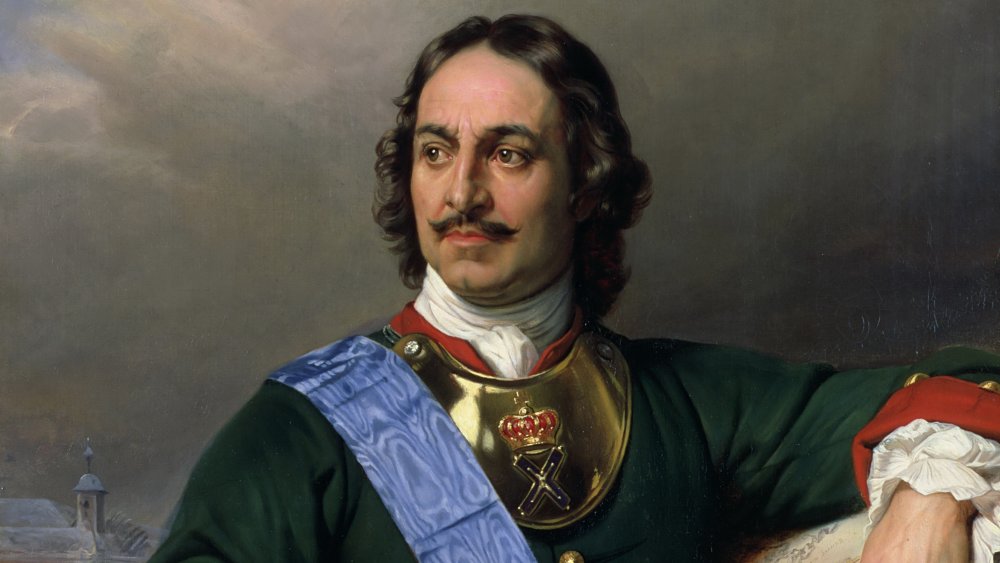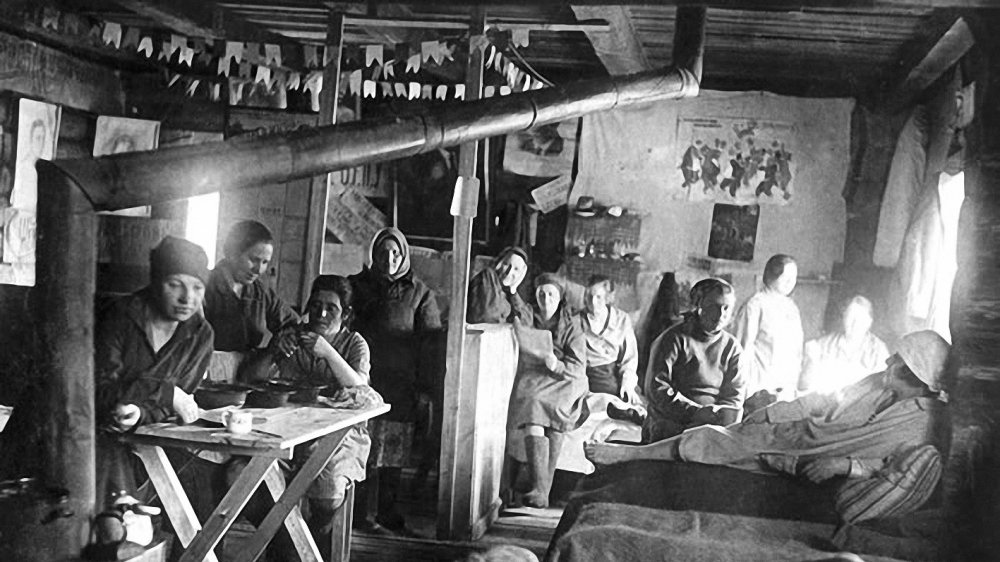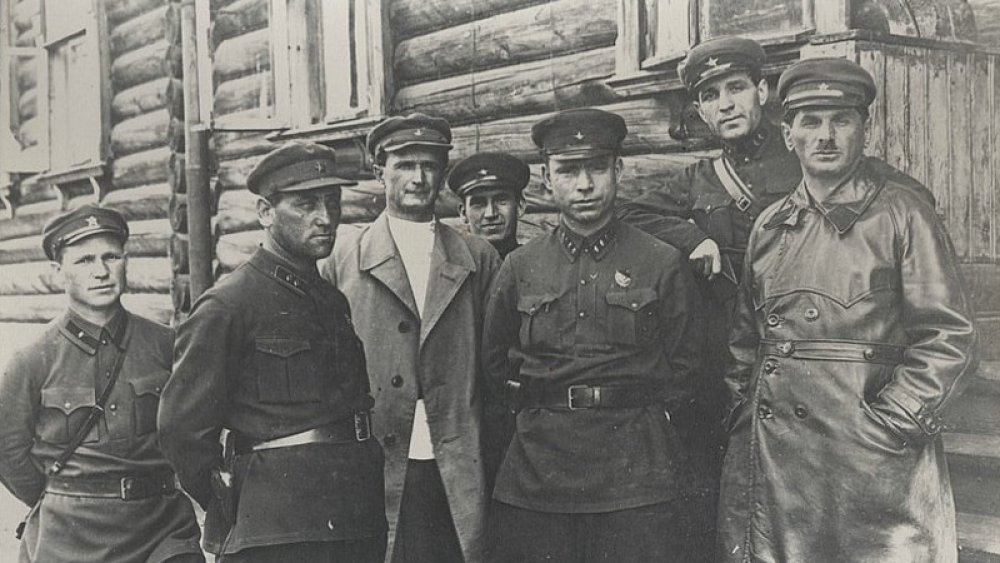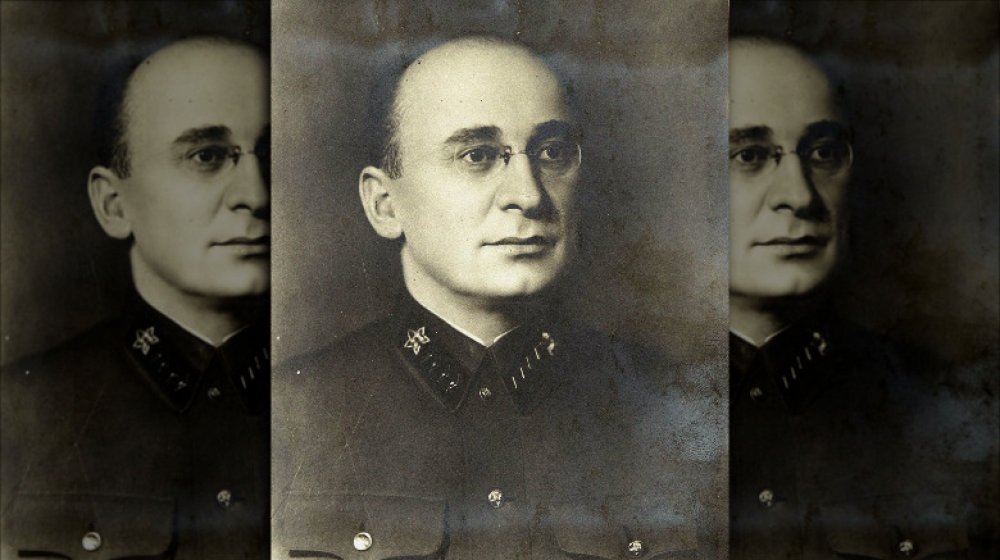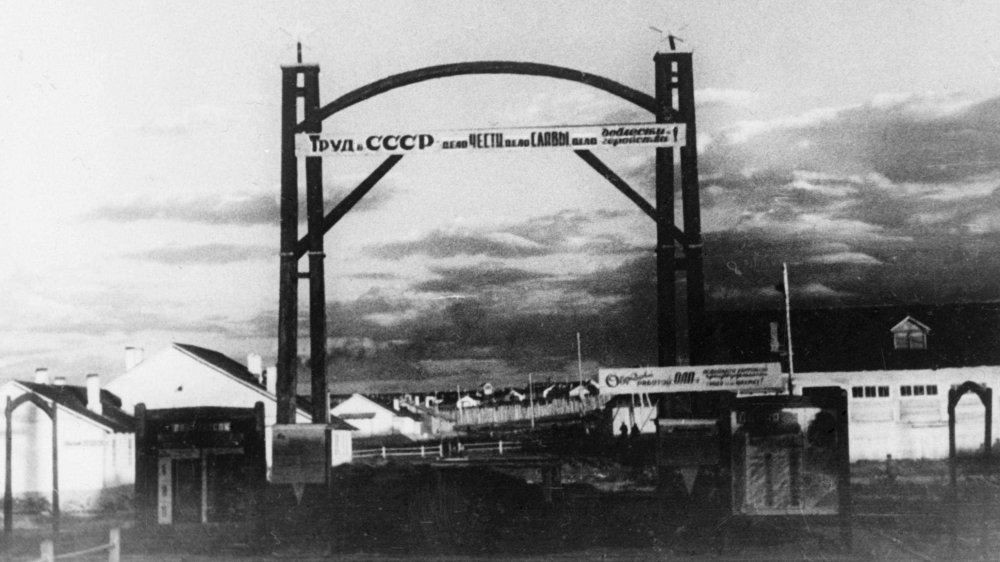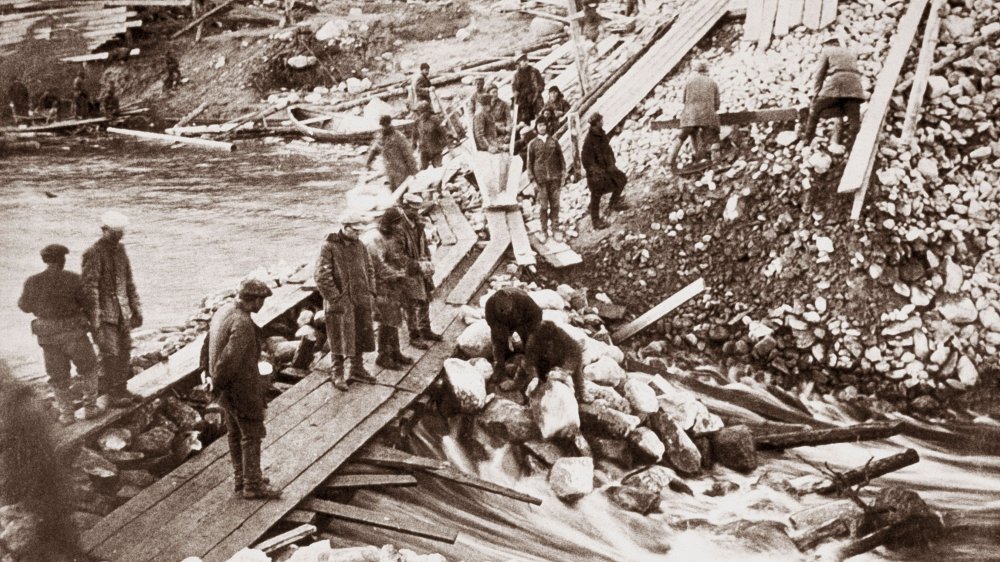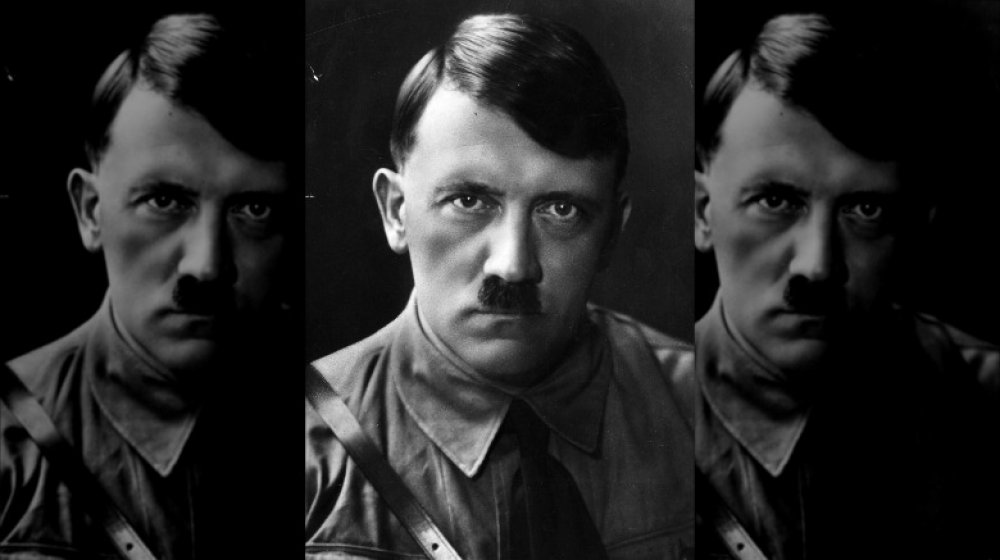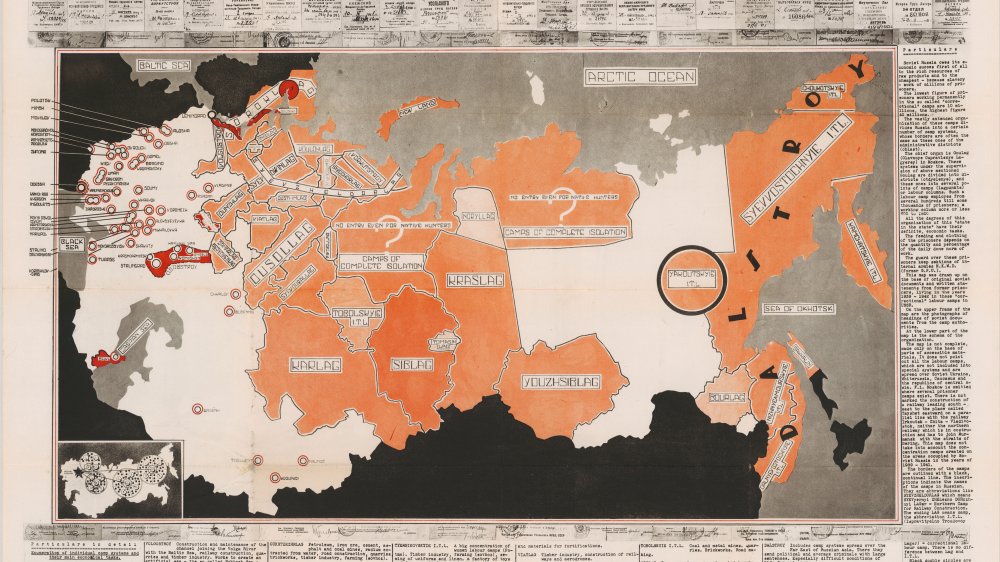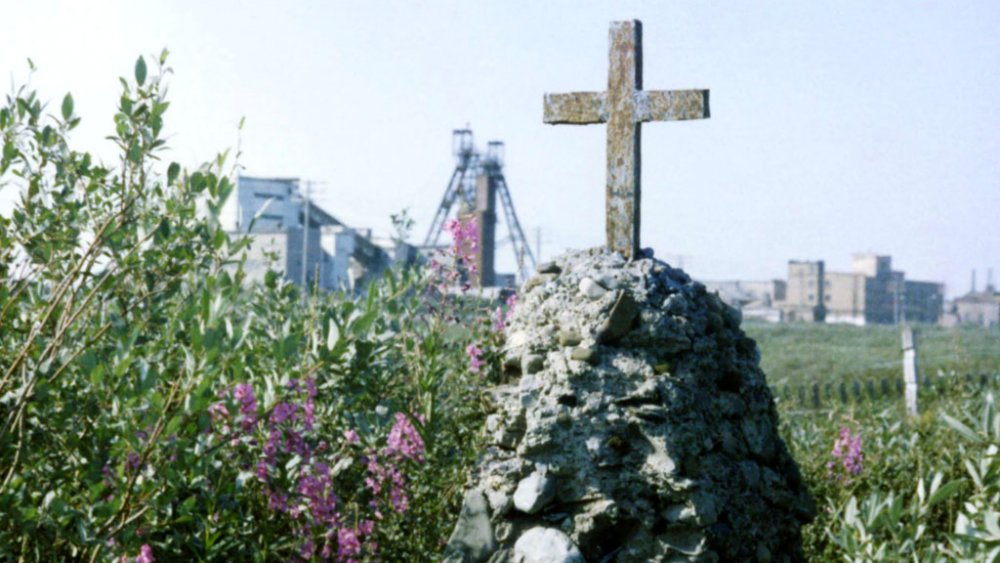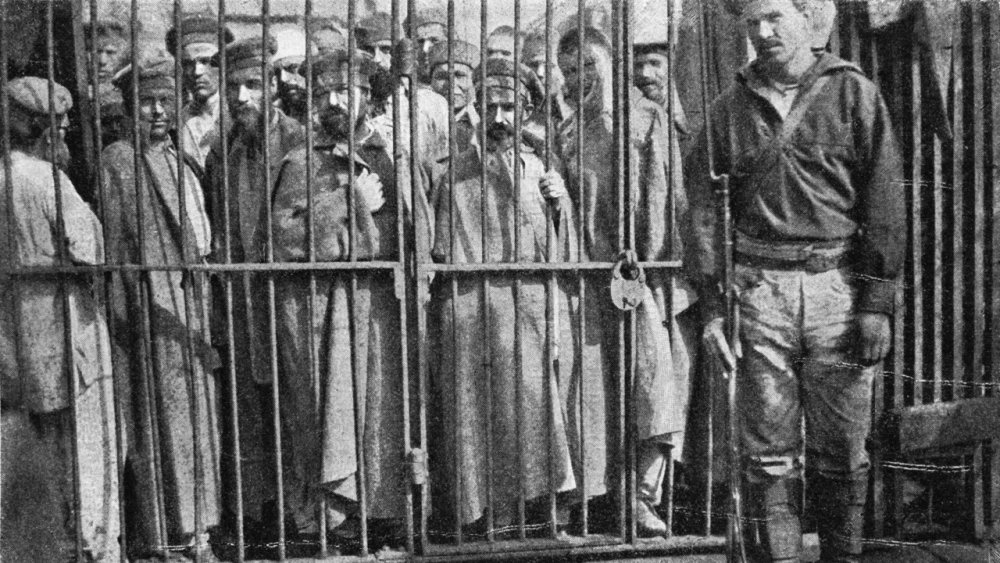The Messed Up Truth Of The Soviet Gulag
Ever since the publication of Aleksandr Solzhenitsyn's The Gulag Archipelago and its incredible descriptions of the Soviet Union's vast network of prison camps, the word "gulag" has come to mean any sort of labor camp for political prisoners. But "gulag" isn't really a word—it's an acronym for Glavnoye Upravleniye Ispravitelno-Trudovykh Lagerey, which means "Chief Administration of Corrective Labor Camps" in Russian.
Under Joseph Stalin, the Gulag labor camps grew to an enormous scale. Millions of people passed through them every year as Stalin used the system as both a source of slave labor and a way of getting rid of large groups of people for an insanely long list of reasons. And millions of people died in that system. They died of starvation, of beatings, of gang justice, disease, and simple despair.
Even more important than their function as prisons and punishments, the labor camps were crucial to the Soviet economy. That made the Gulag one of the most powerful and important organizations in the Soviet Union, ruling a vast empire of real estate, slave labor, and industrial projects. Despite that importance, the messed up truth of the Soviet Gulag—its brutal inefficiency, the origins of its most horrific policies—is still not widely known.
The Gulag was basically an extension of the NKVD
If you want to know the true purpose of something, look at who's in charge. One reason it's always been a hallmark of American society that the president—a civilian—is the Commander-in-Chief of the armed forces is to underscore the whole "by the people" nature of our country. So it's telling that the Gulag was run by the NKVD—the precursor of the KGB. Having your secret police be in charge makes it clear that the purpose of the camps was political terror first and everything else—punishment, slave labor, liquidation—second.
As Fyodor Vasilevich Mochulsky, a former camp foreman, makes clear, new recruits into the Gulag guards soon discovered their employer was the NKVD. Worse, their employment was often mandatory, and the NKVD operated largely outside the law. They could do almost anything they wished, without consequence.
As economist Paul Gregory notes, the Gulag was always part of the USSR's Ministry of the Interior. The Ministry operated under several different names between 1917 and 1953—the Cheka, the OGPU, the NKVD (starting in 1934) and finally the MVD until it was split into two agencies, with the MVD responsible for criminal facilities and the KGB becoming the formal political police. Throughout this entire period, the Gulag was run by these various administrations as part of the Soviet Union's vast surveillance and oppression of its own citizens.
The tsars started it
While the Bolsheviks who took over Russia in the wake of the October Revolution and subsequent Civil War were enthusiastic about prison labor camps in Russia, they didn't invent the concept. The tsars had been using a very similar system, and the communist regime was able to just build on top of that.
As historians Sarah Badcock and Judith Pallot note, exiling prisoners to the wilderness had been a feature of Russian justice since the 16th century. Tsar Peter I first instituted a system of penal labor, known as katorga, in 1696. This system shared almost every feature of the Gulag system: It involved transporting large numbers of criminals to remote prison camps, usually in Siberia. The prisoners were used for heavy labor, typically in mining and logging.
This system made labor camps an accepted and familiar part of Russian life, which made it a very simple matter for the Gulag to simply take over the existing infrastructure and continue running it as their predecessors had for centuries—and then expanding it. The Gulag did bring a brutal new efficiency to the system. As Badcock and Pallot explain, the imperial governments were very bad at getting their prisoners to work, with over 50 percent of inmates at the camps doing no work at all due to medical problems and lack of proper nutrition. The Gulag improved their numbers by not caring about such things.
There were two camp systems
After being an open secret for decades, the prison system overseen by the Gulag became synonymous with forced labor and dictatorship when it was publicized to the world by Aleksandr Solzhenitsyn with 1973's The Gulag Archipelago. These days the word "gulag" is used as a generic term for a harsh political prison. But the system administered by the Gulag in the USSR wasn't the only network of prison camps maintained by Russia. There was actually a second system—the Glavnoje Upravlenyije po gyelam Vojennoplennih i Internyirovannih (GUPVI).
As historian Andrew H. Beattie writes, the Gupvi was almost identical to the Gulag system (many of its leaders came from the Gulag). The main difference was that the Gupvi handled prisoners of war used for slave labor, whereas the Gulag chiefly dealt with political prisoners and straight-up criminals. As Gulag-Online notes, the only real difference between the camp systems was the lack of criminals in Gupvi camps. The Gupvi system initially held soldiers captured during World War II, then later took on millions of civilians captured during the fighting.
Some of the prisoners initially sent to the Gupvi system were put on trial for political crimes, however, and were eventually transferred to Gulag-run camps. Either way, prisoners could expect back-breaking work, terrible conditions, and no guarantee of survival.
A former prisoner is credited with making the camps worse
You might expect that anyone serving a sentence in one of the Gulag camps would be adamantly opposed to the Gulag on principle. But one of the main architects of the brutality that came to define these camps was once a prisoner himself.
As historian Anne Applebaum writes, Naftaly Frenkel was a prisoner in the Gulag system in its earliest days during the 1920s. According to Meduza, Frenkel had worked for the OGPU, the government agency that initially set up the Gulag system, but was arrested for fraud and sentenced to death. His sentence was commuted to exile in the labor camps. He was a model prisoner, and his good behavior led to the guards treating him as an authority among the prisoners, and he was actually released and hired on as a guard and later a camp supervisor after only serving a short term as a prisoner.
One reason for Frenkel's rise was a series of proposals he wrote while a prisoner. These documents were filled with suggestions for making the prison camps more brutal and efficient. Many of his recommendations were adopted—the most notorious being the link between food rations and production, wherein only productive prisoners were fed. Frenkel argued that this would cull the weaker workers and save on food costs—and that was just one of the many ways Frenkel made the camps more hellish than they already were.
The Gulag system was streamlined by a monster
Dictatorships tend to attract the worst kinds of people, including (perhaps especially) psychopaths and serial killers. Lavrentiy Beria was both of those (and a sexual predator, to boot). He was also the man who turned the Gulag system into an efficient mechanism of terror and control in Soviet Russia.
As The Atlantic writes, Beria was a maniac. Not only did he personally order the execution of tens of thousands of people, he also routinely had women detained and brought to his mansion, where he would sexually assault them and then threaten them with arrest if they did not agree the encounter had been consensual.
But Beria was a masterful administrator. Historian Christopher Joyce notes that under Beria's leadership the Gulag system became more standardized, and the guards and other staff saw their standard of living and working rise. Beria consolidated his control of the NKVD (and as a result the Gulag system) and began turning the labor camps into an efficient source of slave labor and an economic powerhouse. He used claims of labor shortages to get the rules governing prisoner labor relaxed, which allowed him to wring every last bit of work out of the people he arrested. Beria single-handedly made the Gulag system into the efficient death machine that Stalin used to control his country.
The Gulag became an economic powerhouse
While most people focus on the millions of deaths and the horrifying conditions of the camps administered by the Gulag, the true importance of the camps wasn't punitive, or even the terror they inspired. It was economic.
As historian Michael P. Gallen writes, the Gulag system was transformed into a slave labor business in 1929 when the Soviet government passed laws that transferred any prisoner with a sentence longer than three years to the camps. According to the National Park Service, as a direct result of this change the prisoner population under the Gulag grew from 179,000 in 1929 to nearly 2.5 million in 1953. It's estimated that at its height, about 15 percent of the entire population of the Soviet Union was interred in a Gulag camp.
That enormous number of prisoners was a source of essentially free labor. As the Foundation for Economic Education explains, the Soviet economy was weak and disorganized, and in order to rapidly modernize and industrialize unrealistic "Five Year Plans" were devised that called for ambitious quotas in labor-intensive industries like logging and mining. Because the Gulag could provide tens of thousands of laborers at zero cost, the Gulag quickly became dominant in these industries. No legitimately run business or government enterprise could compete with free labor.
The Gulag was incompetent
With a free labor force of millions, the Gulag was an incredibly important part of the Soviet economy. Because it could instantly supply thousands of workers, the Gulag was charged with several enormous building projects. Since that labor came virtually cost-free, in theory the system should have supercharged the Soviet economy. Due to the general incompetence of the Gulag, however, the opposite was true.
According to History, the prisoners set to work on these huge projects, like the White Sea-Baltic Canal, were often given incorrect or old, worn out tools. Sometimes they were forced to work with their bare hands. These projects were also typically poorly designed, and the lack of skilled workers often wiped out the numerical advantage of free labor.
As historian Michael P. Gallen notes, other problems plagued Gulag-run projects. Equipment was often difficult to obtain, and when it was finally delivered it often made no difference because no one at the camp knew how to operate it properly. In one instance, tractors were delivered but no motor oil for their engines. In another, a generator sat idle for two years because no one there even knew what it was. And because so many of the prisoners were educated professionals—engineers and doctors, for example—the Gulag system actually weakened the overall economy by removing these skilled, educated workers and making them do manual labor.
Hitler took notes
The Russians didn't invent labor camps, just as the Nazis didn't invent concentration camps. And it would be a mistake to suggest that Adolf Hitler and the Nazi Party needed the example of the Gulag in order to engineer their systems of concentration camps used during the Holocaust. Even if the Gulag had never come to be, the Nazi camps almost certainly would have existed.
But as The New Yorker notes, Hitler was definitely inspired by the organization and structure of the Gulag system. The Soviets tried to keep the details of the camps secret, but the world knew of their existence and how they were organized and used. In 1921, Hitler wrote an article detailing how similar camps could be used to stop the Jewish "corruption" of Germany, and soon the building of such camps was a specific point in his speeches.
The Germans didn't just take inspiration from the Gulag—prior to Germany's invasion of Russia in 1942, the Gulag and the Gestapo worked closely. As noted by the Euromaidan Press, when political dissidents fled Germany into Russia, they were often simply sent to Gulag-run camps. Run similarly, the main difference between the camps was their ultimate goal. The German concentration camps were designed explicitly to execute a huge number of people in an attempt to destroy an entire race—the slave labor was a secondary benefit. But slave labor was the main point of the Gulag system.
The Gulag was a shadow empire
At its height, the Gulag was one of the most powerful and influential government agencies in Soviet Russia. It managed a population of prisoners that was larger than many small countries, managed large tracts of real estate, and handled huge building, mining, and logging operations. As noted by historian Edwin Bacon, this meant the Gulag essentially had the same responsibilities as a government. It had to house and feed its "citizens," provide them with shelter, health care, and even security. The Gulag was very much a state within a state; outside the camps, the Soviet government had to provide these services. Inside the camp, it was up to the Gulag administration.
This meant that the men who ran the Gulag system were able to exercise autocratic power within their domain, kind of like kings acting as vassals of a larger empire. Instead of paying tribute in the form of taxes or crops, the monarchs of the Gulag were expected to deliver an endless supply of slave labor. And failure to live up to their end of this bargain often landed these "monarchs" in their own labor camps. But as long as they could keep the supply of slaves flowing, they had almost total power within their part of the system.
Camp commanders routinely executed huge numbers of prisoners
Unlike the Nazi concentration camps, the primary objective of the camps run by the Gulag wasn't genocide or mass deaths—it was slave labor. This resource quickly became absolutely essential to the Soviet economy. It was widely accepted that the weaker prisoners would die quickly in the brutal, poorly-run camps, but overall the prisoners were considered to be important assets.
But as historian Michael P. Gallen points out, the Gulag officials in charge of the camps often wasted this resource—by executing huge numbers of prisoners. Many of these executions were ordered by the courts, and the end result was that thousands of prisoners who could have contributed valuable labor and expertise were simply murdered.
They knew their authority was absolute as long as they supplied the labor quotas demanded of them. No one would worry over a few thousand dead prisoners. This was then exacerbated by the conditions in the camps, which caused more prisoners to die, leading to some anxiety-ridden moments for the camp commanders. In fact, accurate estimates as to how many prisoners actually died in the camps are difficult to make, because the camp commanders routinely falsified their records because they feared being arrested for their failures—and ending up in their own camps.
The Gulag was unbelievably corrupt
The Gulag system was run like a corporation in some ways, with camp commanders given production quotas for the number of prisoners they could put to work and the amount of work they got from them. Unlike an executive in a company, however, they didn't get bonuses for exceeding those quotas—and if they failed to meet them, they could find themselves arrested and sent to their own camp, or worse.
As a result, as economist Thayer Watkins explains, many camp commanders and prisoners resorted to some pretty ambitious schemes in order to save themselves. In Aleksandr Solzhenitsyn's classic book The Gulag Archipelago, for example, he tells the story of Vasily Vlasov. Vlasov was overseeing the cutting of timber at one of the camps. Since his crew couldn't meet the quotas, he began falsifying his reports, claiming they'd cut down more trees than they actually had. When the retrieval crews reported missing timber, he claimed it was further away, requiring a road to be built to retrieve it. Then he wrote a report arguing that the value of the timber was less than the expense of the roads, and the whole matter was dropped.
In fact, prisoners and officials invented entire operations in order to earn enough food and other supplies to survive. One reason the enormous supplies of free labor represented by the Gulag system didn't help the Soviet economy was simple: Much of the profits earned by slave labor existed only in fictitious reports.
Arrests were often dictated by labor shortages
The real purpose of the Gulag was not to punish criminals or even quell political resistance. Its true purpose was to supply free labor to the Soviet Union. Once the laws were changed in 1929, allowing any prisoner with a sentence of three years or more to be sent to a forced labor camp, entire sections of the Soviet economy became dominated by—and dependent on—slave labor.
That inspired the leaders of the Gulag to treat arrests as a source of labor, as opposed to the free labor being a by-product of the justice system. As historians Gary M. Anderson and Robert Tollison note, when there were labor shortages the NKVD would simply arrest whatever political dissidents were next on their lists—and if no dissidents were available, they would simply choose some other group to arrest, based on little more than the need for workers.
They also treated the existing prisoner population as a commodity instead of as human beings. Historian Christopher Joyce notes that when NKVD chief Lavrentiy Beria faced a shortfall of 400,000 workers in 1939, he introduced a series of proposals that reclassified many prisoners in order to cover the shortfall—until more arrests could be made. The Gulag viewed the entire population of the Soviet Union as potential slave labor, in other words, so it's not surprising that as much as 15 percent of the population was in the Gulag system at its height.
